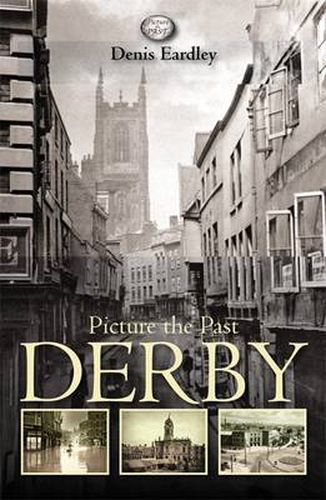Readings Newsletter
Become a Readings Member to make your shopping experience even easier.
Sign in or sign up for free!
You’re not far away from qualifying for FREE standard shipping within Australia
You’ve qualified for FREE standard shipping within Australia
The cart is loading…






This title features nearly 400 images showing in fine detail some of the changes that have taken place in Derby and the surrounding suburbs over a period of more than 150 years. The images have been arranged in the form of trails, which for the most part the reader can easily follow on foot to get the maximum benefit from the book. In medieval times, Derby grew in importance as a busy centre of trade, attracting people from other towns and outlying villages. Derby’s first Market Charter was not particularly detailed, but the second, granted fifty years later, in 1204 by King John was much more precise. This Charter allowed a weekly market, held from Thursday to Friday evening and granted the Burgesses the right to levy tolls from the traders, as well as punish thieves. Later additions to the Charter gave the rights to hold fairs at Easter, Whitsun and Michaelmas. However, the most significant change in Derby’s history, took place on the 30 May 1839, when the first railway train steamed into the town. The excited crowds watching the train’s arrival little realised how this event would change the face of Derby. Initially, three railway companies operated from Derby, until in 1844 they amalgamated to form the Midland Railway. This hectic activity attracted swarms of workers from all over the country and in 1851 records showed that 43 per cent of the adults in the town had been born outside the county. Derby’s reputation as an industrial town was boosted even further with the arrival of Rolls-Royce at the beginning of the 20th century. The latest development in the city - Derby having acquired city status in 1977 - has been the successful development of Pride Park, on land previously used by the railway industry. This collection of images illustrates the industries, the streets and markets and the people who lived in Derby and the former villages, which once surrounded the town. The old scenes will bring back vivid memories for some and introduce others to what life used to be like in bygone days.
$9.00 standard shipping within Australia
FREE standard shipping within Australia for orders over $100.00
Express & International shipping calculated at checkout
This title features nearly 400 images showing in fine detail some of the changes that have taken place in Derby and the surrounding suburbs over a period of more than 150 years. The images have been arranged in the form of trails, which for the most part the reader can easily follow on foot to get the maximum benefit from the book. In medieval times, Derby grew in importance as a busy centre of trade, attracting people from other towns and outlying villages. Derby’s first Market Charter was not particularly detailed, but the second, granted fifty years later, in 1204 by King John was much more precise. This Charter allowed a weekly market, held from Thursday to Friday evening and granted the Burgesses the right to levy tolls from the traders, as well as punish thieves. Later additions to the Charter gave the rights to hold fairs at Easter, Whitsun and Michaelmas. However, the most significant change in Derby’s history, took place on the 30 May 1839, when the first railway train steamed into the town. The excited crowds watching the train’s arrival little realised how this event would change the face of Derby. Initially, three railway companies operated from Derby, until in 1844 they amalgamated to form the Midland Railway. This hectic activity attracted swarms of workers from all over the country and in 1851 records showed that 43 per cent of the adults in the town had been born outside the county. Derby’s reputation as an industrial town was boosted even further with the arrival of Rolls-Royce at the beginning of the 20th century. The latest development in the city - Derby having acquired city status in 1977 - has been the successful development of Pride Park, on land previously used by the railway industry. This collection of images illustrates the industries, the streets and markets and the people who lived in Derby and the former villages, which once surrounded the town. The old scenes will bring back vivid memories for some and introduce others to what life used to be like in bygone days.